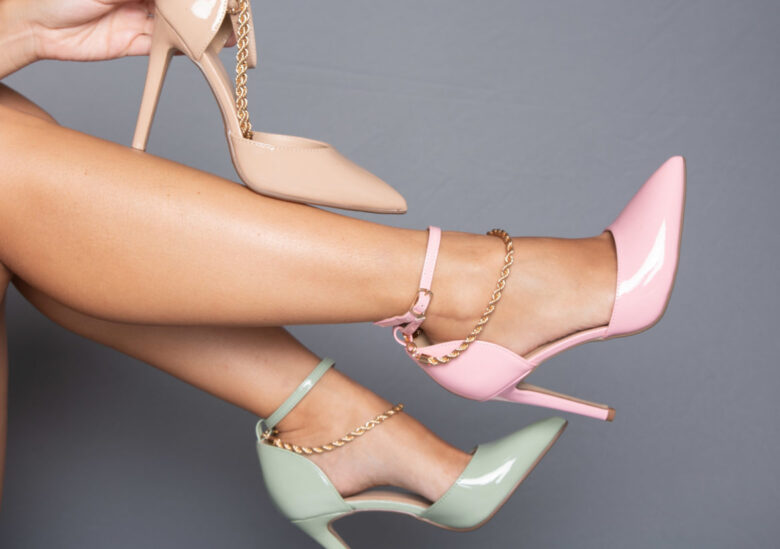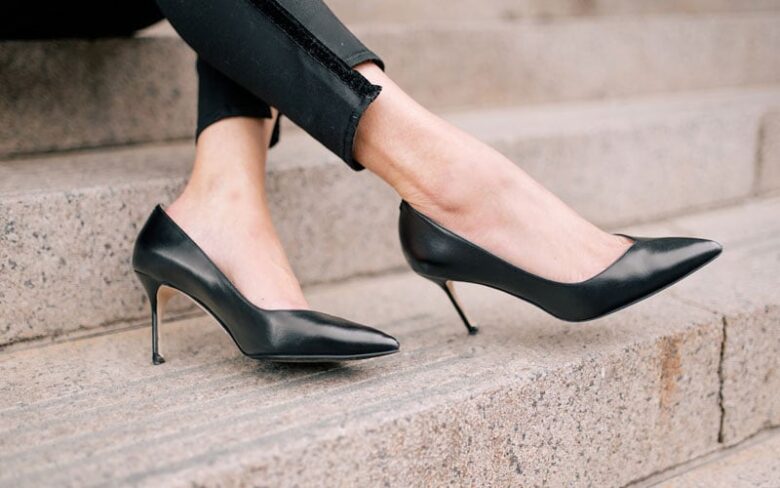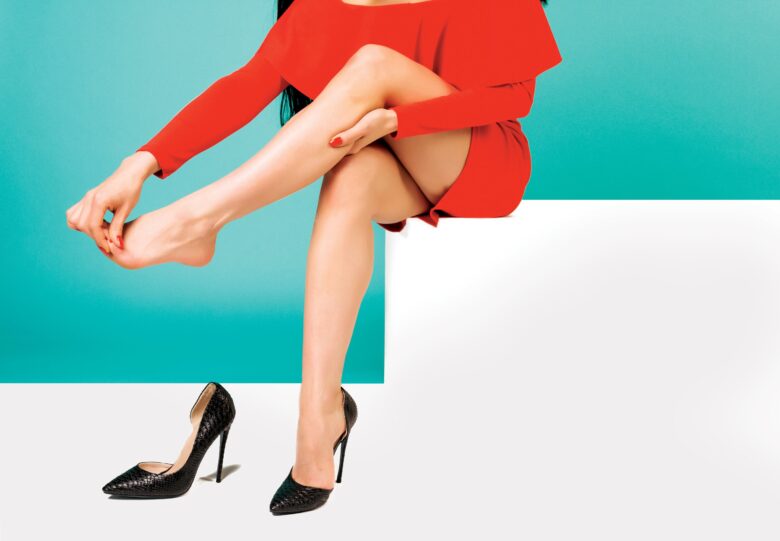High Heels Can Be Extremely Painful To Wear For Any Length Of Time And Many People Struggle To Last An Entire Day In These Shoes. From blisters, tired feet, and sore legs, wearing high heels all day can be excruciating. While there is no one-size-fits-all solution to enduring a full day in heels, there are a few methods that may help make it easier.
Contents
Anatomy of a Heel

Source: santopie.com
To understand how to effectively wear heels all day, it’s important to become familiar with the anatomy of a heel and its components. Knowing what parts make up your high heel is key to finding comfort in a high-heeled shoe that doesn’t cause unwanted pain in the feet.
Upper: This is the visible portion of the shoe, typically constructed from leather or suede for comfort but also for aesthetics.
Platform sole: This is the flat base of the shoe that makes contact with the ground when walking. It adds extra cushioning and support for your soles while walking or standing in your heels.
Outsole: The bottom-most section of your heel that comes into contact with ground surfaces first; usually composed of rigid rubber material for increased traction and durability.
Insole/lining: The inner part of your shoe that lays against your feet; In some cases, there may be cushioning in this area but typically it does not have much support unless an aftermarket insert has been placed in for additional comfort.
Counter/Backstay: Generally composed of leather, this part supports your ankle when walking and keeps it from shifting too much within its socket; often overlooked as people are more focused on visuals than structural support outside their shoes!
Lift/Stiletto: This portion is typically made from metal such as steel or brass and rises up from underfoot providing additional height while maintaining stability; some models may feature a plastic lift instead which offers slightly less rigidity yet increases flexibility during motion due to its lightweight nature.
Tips for Wearing Heels All Day

Source: toptrendsguide.com
One way to make it more bearable is to buy shoes with thicker heels. Shoes such as wedges or platforms provide extra cushioning and support, which will help keep your feet from becoming too sore. If possible, look for styles that contain extra padding, like foam or gel cushions in the footbeds.
Similarly, shoes with ankle straps will provide additional support and help keep your feet in alignment which may reduce the strain on them. Additionally, it is important to choose a model that is appropriate; when possible stick to an inch or two inches maximum. If you must wear taller heels it may be helpful to bring a pair of flats with you so they can be worn while taking a break.
The importance of wearing supportive socks cannot be stressed enough; socks that absorb moisture work best as they help keep moisture away from your skin which will reduce friction. Make sure that your socks fit correctly and don’t slip off; they should fit just under the base of the heel where it begins to curve down from the back counter towards the toe box. Wearing insoles is also a great way to prevent pain in the long run; some shoe stores sell insoles specifically designed for high-heeled shoes if you don’t want to buy them separately.
Finally, periodically check in with yourself throughout the day; if anything starts hurting when wearing heels then take a break or switch to another pair of shoes for an extended period of time before going back into your high-fashion stilettos.
Choosing the Right Model

Source: washingtonian.com
The best type of heel to wear will depend on your comfort levels, as well as how much you’ll be walking and standing while wearing them. Consider these factors when choosing the right kind of shoe:
– Height: High-heeled shoes can look stylish, but you may want to opt for a lower heel if you’ll be on your feet for prolonged periods. A slightly lower-heeled shoe (around 1-2 inches) can still be elegant, but it won’t put as much strain on your feet.
-Thickness: A stiletto may be less comfortable to walk in than a thicker model, such as a block or wedge style. Thicker models provide better balance and more cushioning than stilettos, making them easier and more comfortable to walk in for several hours at a time.
-Material: Choose models made out of materials that are breathable and soft like leather or suede to help prevent sweat build-up which can lead not only to discomfort but also potential bacterial growth which could lead to an infection.
Applying Heel Balms
Heel balms are important when wearing high heel shoes because they help to prevent and heal dry and cracked heels. High heel shoes can cause pressure and friction on the heels, leading to thickening and hardening of the skin. This can make the heels more prone to cracking, especially in dry weather or when wearing open-backed shoes. Cracked heels can be painful, unsightly, and increase the risk of infection.
Heel balms are specially formulated to moisturize and exfoliate the skin on the heels. They contain ingredients such as hyaluronic acid, coconut oil, cocoa butter, petroleum jelly and gentle acids that help to break down the calluses and restore the smoothness and softness of the heels. Heel balms should be applied daily, preferably at night, and covered with cotton socks for better absorption. Some heel balms also have refreshing and deodorizing effects, such as those with minty or coconut scents.
Using heel balms regularly can improve the appearance and health of the heels in a matter of days. They can also make wearing high-heel shoes more comfortable and enjoyable. Heel balms are a must-have for anyone who loves high-heel shoes and wants to keep their feet looking and feeling great.
A quick Google search for a term like “Australias best heel balm” should already provide a list of balms that you can check out.
What are the alternatives?
When it comes to achieving lasting comfort without sacrificing a fashionable look, choosing flat or low-heeled shoes can be a great option. For workdays and dressier occasions, try ballet flats, loafers, moccasins, oxfords, and slip-on sneakers. These styles often come in more professional materials such as leather or suede with sophisticated details like embossed logos or burnished buckles. Plus, many styles are stackable so you can carry them along in your handbag for a reprieve from uncomfortable shoes.
For sporty days or casual outings, choose comfortable paddles footwear with extra padding in the soles such as flip-flops and sandals. Slip into some canvas shoes, hiking boots, and even rocker booties — they can all be just as stylish but are much more stress-relieving on your feet than those killer stilettos! As an added bonus these kinds of shoes have a much longer lifespan than several pairs of heels would have.
Whenever possible trade in those tendentious pumps for more supportive options that provide ample cushioning to protect your feet from stress.
Conclusion
Wearing heels all day can cause pain and discomfort, but many people manage to do it with a little bit of extra care. Wearing the right size of shoes is important, as is choosing shoes with comfortable shapes and padding. Good posture and regular movement can help relieve any strain on the feet while ensuring that heels don’t cause too much pain over time. Shoes with flats or platform heights can also be useful when trying to wear heels for long periods of time. In addition, it may be useful to use shoe cushions and insoles for added comfort and support. With these tips in mind, people can successfully survive wearing heels all day without discomfort.
